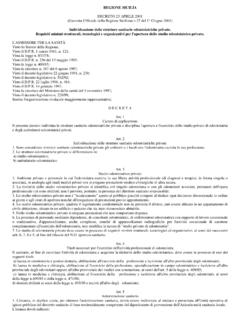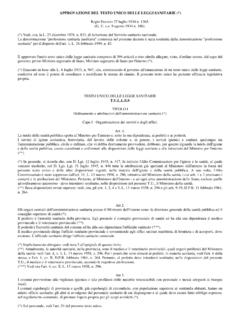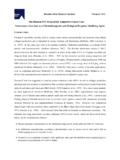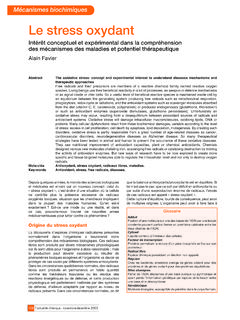Transcription of ON CRESTAL BONE RESORPTION , F. CARINCI , I. …
1 PROOFEUROPEAN JOURNAL OF INFLAMMATION0393-974X (2011)Copyright by BIOLIFE, publication and/or article is for individual use only and may not be furtherreproduced without written permission from the copyright reproduction may result in financial and other penalties1 PROOFEFFECT OF DISTANCE BETWEEN ONE PIECE IMPLANTS ON CRESTAL BONE RESORPTION S. FANALI1, F. CARINCI2, I. ZOLLINO2, G. BRUNELLI3, R. MONGUZZI21 Department of Oral Science, Nano and Biotechnology, University G. D Annunzio , Chieti, Italy2 Department of , Section of Maxillofacial and Plastic Surgery, University of Ferrara, Ferrara, Italy3 Department of Dentistry and Maxillofacial Surgery, Don Orione Institute, Bergamo, ItalySoft tissue esthetics, along with osseointegration, are important factors for successful implant treatment.
2 During the treatment procedure, minimal soft tissue intervention has been advocated for obtaining optimal soft tissue integration. Thus, it would be desirable not to manipulate the soft tissue at the implants during and after initial healing, as such intervention may disrupt the soft tissue seal. Abutment connection in the 2-stage treatment procedure requires a second surgical intervention involving the soft tissue and, in addition, the procedure generally involves use of healing abutments that are removed after soft tissue healing. The replacement of healing abutments with definitive abutments may result in disruption of the tissue at the implant-soft tissue interface (1).
3 The presence of a trans-mucosal component at two-piece implant systems can lead to intentional or unintentional disconnections of this abutment. Based on Hermann et al. (2) results, an unintentional abutment loosening will lead to a disruption of the soft tissue integration and to increased bone remodeling. It has also been shown that repeated intentional abutment disconnections and reconnections after alcoholic disinfection induces an apical repositioning of the soft tissues and marginal bone RESORPTION (3). In contrast, a single shift of a healing abutment and replacement by a final abutment proved to induce no marginal bone remodeling (4).
4 Unavoidable issues of bone RESORPTION and soft tissue remodeling following tooth extraction (5) have been proposed with the most significant bone RESORPTION occurring in the first 3 months (6). This has been attributed to be predominantly due to the loss of bundle bone around the socket and the RESORPTION of the external cortical plate in response to surgical trauma (5). Immediate implant placement in fresh extraction sockets have shown to limit this extent of the anticipated hard and soft tissue remodeling therefore, avoiding the need for augmentation procedures (7). Single implant crowns as immediate restorations both in and out of occlusion on implants placed in fresh extraction sockets have shown acceptable Key words: One-piece, implant, fixture, welding, bone, immediate 9, no.
5 2 (S), 0-0 (2011)One-piece implants became incorporate the trans-mucosal abutment facing the soft tissues as an integral part of the implant. The interface between the trans-mucosal component and the implant is generally located in the neighbourhood of the alveolar bone level. One-piece implant are usually welded together and immediately loaded. Since no report is available on the effect of distance between implants on clinical outcome, a retrospective study was performed. Nineteen patients (10 females and 9 males) with a median age of 62 years (min-max 43-80) were enrolled. The mean follow-up was 7 months.
6 A total of 176 one-piece implants (Diamond, BIOIMPLANT, Milan, Italy) were inserted. Among them 11 failed ( survival rate SVR = ). The remaining 165 were studied as regard peri-implant bone RESORPTION . Since 4 fixtures have a CRESTAL bone RESORPTION higher than mm, the success rate (SCR) was Log rank testing was used to compare success curves. Statistical analysis demonstrated that an average distance between fixtures of about 2 mm does not determine an higher CRESTAL bone RESORPTION when one-piece implants are used. In conclusion one-piece implants are reliable devices for oral rehabilitation and distance between fixtures of about 2 mm does not determine an higher CRESTAL bone RESORPTION .
7 Corresponding author: Prof. Francesco CARINCI , of Section of Maxillofacial and Plastic Surgery University of FerraraCorso Giovecca 203, 44100 Ferrara ITALYE-mail: : + : + (S)PROOFPROOF3 (S)European Journal of Inflammationprosthodontic and patient-satisfaction outcomes (8, 9).Using experimental implants with either a one-piece or a two-piece design, Hermann et al. (10) showed significantly higher apical migration of the soft tissues and marginal bone RESORPTION with two-piece implants, suggesting a role of the sub-gingival position of the abutment/implant interface (so-called microgap) on tissue remodeling in strong opposition with several animal studies (2, 3, 11) in which a soft tissue integration occurs at the abutment level.
8 In another experiment of the same group (2) it was demonstrated that the size of the microgap between implants and abutments has little influence on marginal bone remodeling, whereas micromovements of the abutments induce a significant bone loss, independent of the microgap s size. This strongly suggests that the mechanical disruption of the soft tissue interface is of important variable for the aesthetic outcome is the distance between implants. Around dental fixtures exists a biologic width of few millimeters that have to be preserved in order to not have adverse effect on soft and hard tissues around implant (12).
9 Since one-piece implants became more and more popular and no report is available on the effect of the distance between implants on clinical outcome we perform a retrospective study. MATERIALS AND METHODSA) Study design/sampleTo address the research purpose, the investigators designed a retrospective cohort study. The study population was composed of patients at the Dental Clinic, University of Chieti, Italy for evaluation and implant treatment by between January and December 2010. Subjects were screened according to the following inclusion criteria: controlled oral hygiene and absence of any lesions in the oral cavity; in addition, the patients had to agree to participate in a post-operative check-up program.
10 The exclusion criteria were as follows: bruxists, smoking more than 20 cigarettes/day, consumption of alcohol higher than 2 glasses of wine per day, localized radiation therapy of the oral cavity, antitumor chemotherapy, liver, blood and kidney diseases, immunosupressed patients, patients taking corticosteroids, pregnant women, inflammatory and autoimmune diseases of the oral ) Variables Several variables are investigated: demographic (age and gender), anatomic (tooth site, distance between implants), implant (length and diameter), and prosthetic (welding procedure) variables. The predictor of outcome is the peri-implant bone RESORPTION .









